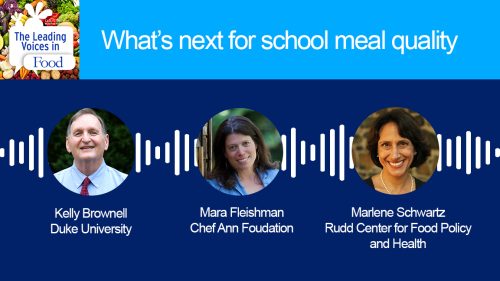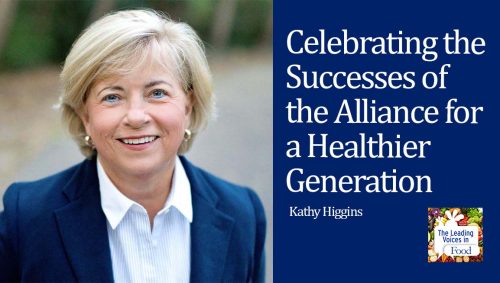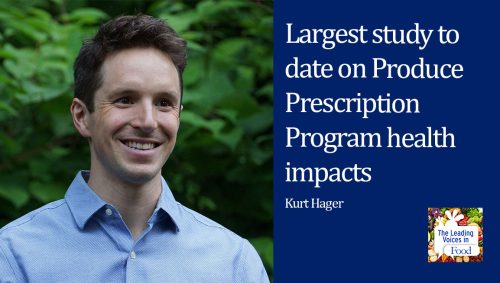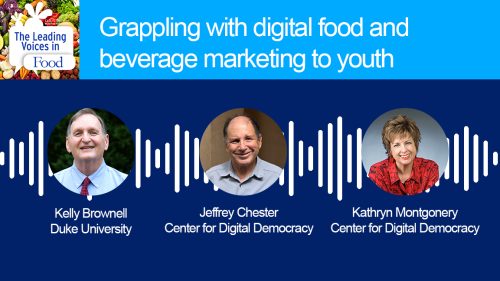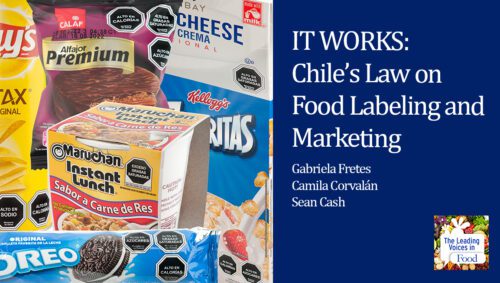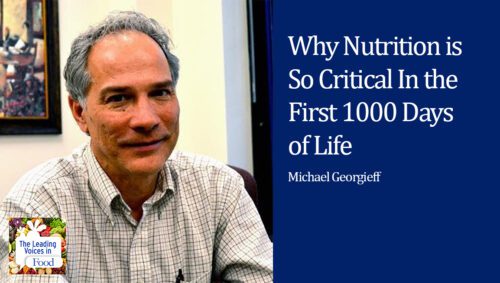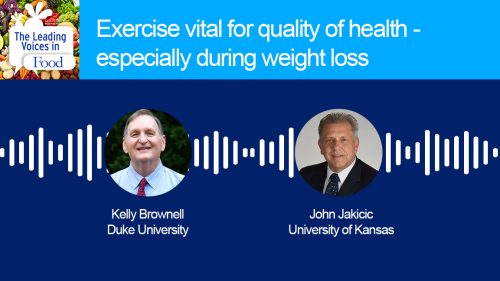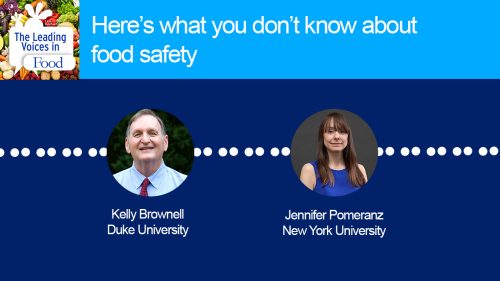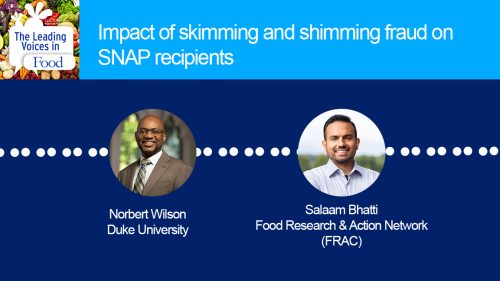The Leading Voices in Food
E88: How to Sugarproof Your Kids
This is the second of two podcasts with the authors of the new book Sugarproof, The Hidden Dangers of Sugar that are Putting Your Child at Risk and What You Can Do. Our first podcast offered a fascinating view of the effects of sugar on children and this podcast will discuss what might be done. University of Southern California’s Michael Goran leads the program in Diabetes and Obesity at Children’s Hospital of Los Angeles, his co-author Emily Ventura is a nutrition educator, public health advocate, writer and cook.
Subscribe: Apple Podcasts | TuneIN | YouTube Music | SoundCloud | PocketCasts | Radio Public
Tags: Addiction & Food | Child Development & Nutrition | Childhood Obesity | Children Food Preferences | Diet & Nutrition | Food Policy | Ultra-processed Food & Additives |

Dr. Michael Goran is one of the world’s most widely recognized experts in childhood nutrition and obesity research, with more than 30 years of experience as a researcher, mentor, and educator. He is a Professor of Pediatrics at the University of Southern California, Keck School of Medicine, Co-Director of the USC Diabetes and Obesity Research Institute and leads the Program in Diabetes and Obesity at the Children’s Hospital of Los Angeles. He holds the Dr. Robert C and Veronica Atkins Endowed Chair in Childhood Obesity and Diabetes. Michael is a native of Glasgow, Scotland, and received his Ph.D. from the University of Manchester, UK.
Dr. Emily Ventura is an experienced nutrition educator, public health advocate, writer, and cook. After working in writing and public relations in the arenas of environmental protection and food, she completed her Master’s in Public Health and Doctorate of Philosophy in Health Behavior Research at the University of Southern California. She was selected as a Fulbright Scholar to teach Public Health Nutrition in Italy and now lives in California and works as a writer, recipe developer, and mother to two young boys.
Interview Summary
So Emily let’s begin with you, so some families might feel overwhelmed about where to start because there’s sugar reduction because sugar is in so many things and it’s kind of a perplexing topic for many so why don’t we start with your thoughts on how much sugar a child can safely consume.
Just to validate with what you said, it is completely overwhelming. We try and simplify things and make it less overwhelming by giving practical solutions and also by giving some more specific guidelines on what would be ballpark range for safe levels of sugar. We’re not suggesting that families take out all sugar because that’s just not realistic and not going to work but we do give some age specific recommendations that are all based on the guidelines of roughly 5% of your daily calories from added sugar.
The recommendations we came up with kind of echo what the World Health Organization has been promoting for a long time which is 5% of daily calories. The problem is in children, a one year old is very different from an 18 year old so how do we come up with recommendations along that spectrum? And so we came up with age specific recommendations based on the needs of a one year old versus an 18 year old. What we recommend–which is now looks like it’s going to be recommended in the new Dietary Guidelines–is that for zero to two years of age, zero added sugars. Then from two to 18, it depends on the age, and it goes from about five grams or a couple of teaspoons of added sugar per day up to about 15 or 20 grams per day depending on age. So there’s room in there for added sugars and like Emily said, we’re not suggesting that we completely eradicate had sugar out of children’s diets. We think that’s just completely unsustainable and not going to work in the long run but reflecting back to those recommendations from the World Health Organization and now the new Dietary Guidelines of America those translate to roughly 5% of daily energy coming from added sugars as safe levels.
So given the recommendation of our around 5% of calories contributed added sugar, how does that compare to what children are actually consuming now?
Yes, well, currently that number for added sugar is probably around 15 in some populations up to 20% of daily calories so we have a long ways to go in terms of producing added sugars back down. And by the way, just to clarify what we mean by added sugars, this does not include natural sugars in fruit or natural sugar in milk or dairy products, we’re talking about sugars added to food in processed foods and more so things like soda but also many, many other different type of processed foods and snacks. Juice is a little controversial because the Dietary Guidelines and the FDA don’t count juice as added sugars so they would not count juice technically towards those 5%. We think that the sugars from juice is just as harmful to the body as the sugars from soda so we do count the sugars from juice against those 5%.
Thank you. The context really helps here because given that the average intake is three or four times what’s recommended this is a really pretty serious challenge to bring those numbers down. So Emily, where would you suggest that parents focus first?
The first thing we suggest to look at is beverages. The reason for this is because when you have sugar in liquid form, it delivers such a quick dose and a big dose of sugar all at once. A lot of these beverages are also very high in fructose which is especially harmful for the liver and for the body in general, especially for growing children. So we suggest that families take a look at switching from drinking juice to having a glass of water and whole fruit, for example, at breakfast. Or, gradually reducing the other sweet drinks like sodas both regular and diet sports drinks, other juice drinks or coffee drinks, all of the things that are popular that are just full of sugar and really unnecessary sources of added sugar in the diet.
And are there some other strategies or swapping things that families could do to help reduce sugar?
Definitely, so putting some of these sugar guidelines and recommendations into perspective, some of the recommendations depending on the age might be to limit your added sugar to say three to seven teaspoons of sugar a day, it is helpful to realize that you could easily be getting that amount of sugar in your breakfast cereal alone. Things like staple cereals that families might buy that are really convenient and the kids like are ones that are good to take a look at because if you make a simple swap in breakfast. Or, even if you do want to stick with cereal just changing the type of cereal that you buy. Those kinds of changes can have a big impact on the overall amount of sugar that kids get in the given day.
It’s interesting that you mentioned sugar and I was reminded of a study of that I was involved in, led by my former Yale colleague Jennifer Harris. They randomly assigned children to different conditions to test whether they needed sugar in breakfast cereals in order to enjoy them. So half the kids got a low sugar version of a cereal—say cornflakes rather than frosted flakes—and the other got a high sugar version. What the study found is that kids who got the low sugar version of the cereal didn’t add much sugar to sweeten it up. They added fruits voluntarily to sweeten it up, and it ended up having a much better nutrient profile compared the kids who got the high sugar version of cereals. So the industry’s chief argument for sweetened these cereals is that they deliver a lot of nutrients–which is true—but the kids won’t eat them unless they have a lot of sugar and that apparently is not the case. And that’s consistent with your recommendation.
Yeah, I love that study, it was very influential in some of our work and I think it makes a very clear point that kids will adapt to what you put in front of them. They will still eat the little sugar cereals and in fact, opt to put fruit on top of it as natural sweetness. The opposite is true that with the high sweet cereals because kids have a higher preference for sweetness, they will also opt to eat more of it because they want more sugar so if you put the high sugar in front of them they will probably serve themselves more of it.
So let’s ask about non-calorie sweeteners or low-calorie sweeteners even including natural ones like Stevia and monk fruit, are these a good idea for children?
No, we don’t think so. For sure, the more conventional synthetic sweeteners like sucralose and aspartame we just don’t know enough about the long term effects in children. We’re beginning to realize some of the short term effects and you know, they’re not good, we don’t recommend them for children. A lot of food companies and parents are turning to natural sweeteners like Stevia and monk fruit, we just don’t know enough about how the affect of body and to be honest, I think we’d rather sweetened with natural food. What we recommend is if you are going to cook or bake is to use natural sweeteners and by natural sweeteners I don’t mean honey or maple syrup or coconut sugar, those are all added sugars. What we recommend is using whole fruit or dried fruit or dates or frozen bananas. There’s lots of inventive ways that you can get sweetness into foods while maintaining a natural sweetness and get the nutritional benefits of the whole fruits.
Emily, are these sort of low-calorie sweeteners showing up in lots of processed foods and what might parents look for?
It can be so confusing especially with all the claims on the front of products that say no added sugar or all natural. And you think that you’re getting something that’s good for your kids. But, then when you start investigating at the back of the label and looking at the ingredient list you realize that some of these artificial or even all natural low-calorie sweeteners are showing up side-by-side with regular sugar. Or sometimes they’re in there alone and you just don’t realize it. It is important to note that sweeteners are much sweeter than regular sugar. What they do is this sort of reinforce a sweet taste preference that kids already have. So, it makes it harder for kids then to enjoy, you know, more subtle version of sweetness if they’re used to the amplified tastes. We give ideas for how to read labels and avoid them but also to help your kids gradually reset their taste preferences and be more happy with things that are naturally sweetened.
Also it sounds like you’re saying that if kids get used to a very high level of sweetness because of either added sugar or even these non-calorie sweeteners but then that could generalize to preferences for highly sweetened versions of other foods in the diet and it could have a cascading effect, is that right?
Exactly.
Yep, exactly right Kelly.
What about the problem that some parents might worry about, that is over restricting kids and causing a backlash about sugar?
We all know stories of certain kids that you may have known when we were growing up, or kids that you see now whose have parents just forbid sugar entirely. You see the after effects when those kids on their own eat as much as they can. Or they’re really confused or they become afraid of eating things with sugar in them and we certainly don’t want any of that. So kids to have some sugar in their diet, what we suggest is for dual pronged approach, just think about your home food environment and think about the staple foods that you have there for your kid. The idea is to create a safe, healthy food environment where kids can’t go wrong. Whatever they’re going to choose from the pantry to eat—as part of their staples foods, their breads or snacks or cereal or whatever it is—you want all those things to be good, healthy choices so that kids aren’t accidentally getting a lot of sugar in there. The other thing is to raise kids with awareness about sugar but also giving them some autonomy to make their own decisions. Take for example, maybe you go to a party and there’s juice and there’s soda and there’s gummy bears in a dish and there’s cake and there’s ice cream. What we suggest is raising kids with an awareness that maybe they don’t need all of those things. They can choose what would they most like to have at that party so that they still have a treat but they don’t have to sample everything all in one day.
Well, it sounds like very helpful and concrete advice. Well, let me ask both of you about your opinions of our policies. So many policies could be affected by the sort of points that you’re making. You mentioned earlier the Dietary Guidelines and how that might change things—especially no sugar added at all for kids zero to two. But what are the implications on other things like getting rid of soft drinks in schools or changing what’s in vending machines or offered through school lunch programs and I’m wondering what you both think about that? Emily, we’ll start with you.
Well, we’ve seen some examples that can be effective, we would like to see more of them more changes in the school lunch programs and access to healthy foods for kids that live in areas where there aren’t any grocery stores or markets with healthy things.
Thanks, so Michael what are your thoughts on that?
Research actually shows that kids and teenagers get most of their soda at home which is kind of a little surprising and this gets you pretty quickly into talking about marketing and advertising. Other countries are starting to do more in terms of advertising and marketing policies, especially when it comes to targeting their of children so I’d like to see more of that. I’d also like to see better warning labels especially on things like soda and very high sugar items that are marketed to children, we ought to have warning signs on some of those products so that consumers know more directly what some of the health effects are.





